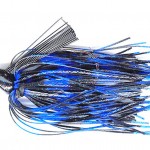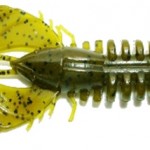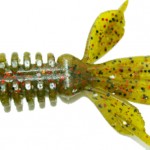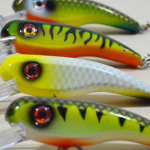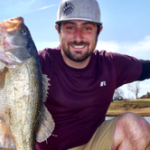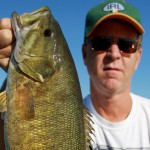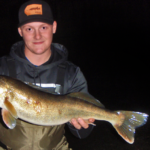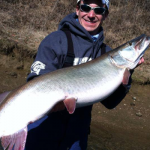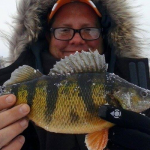By Josh B. Peacock
Rising water means more available cover, as diehard largemouth anglers we often affectionately refer to this gnarly environment as the “junk, jungle, or even Amazon!”. During the spring, largemouth bass will filter into these areas in order to take advantage of the warmer water and increase in baitfish activity.
Oftentimes the main lake may only be in the low to mid 40’s °F, and yet the backs of bays, and inflowing creeks, can be in the mid to upper 50’s °F. A 10° F difference in water temperature for a bass is like Northwestern Ontario vs. Southern Florida in March to us Canadians.
Largemouth will be shallow early, and oftentimes earlier than you think. If you’re a smallmouth fisherman, chances are you will be dragging a minnow bait in 18-25 feet of water in early spring. Myself, I will be in 6 feet or less.
Those inflowing creeks and shallow dark bottomed bays on the north shore are the absolute first places you will find warm water. Look for any baitfish activity, and the best available cover. The remnants of last year’s pencil weeds (hard stem bulrush), winter weathered cattails, floating bogs, and other emergent aquatic vegetation will be your best options.
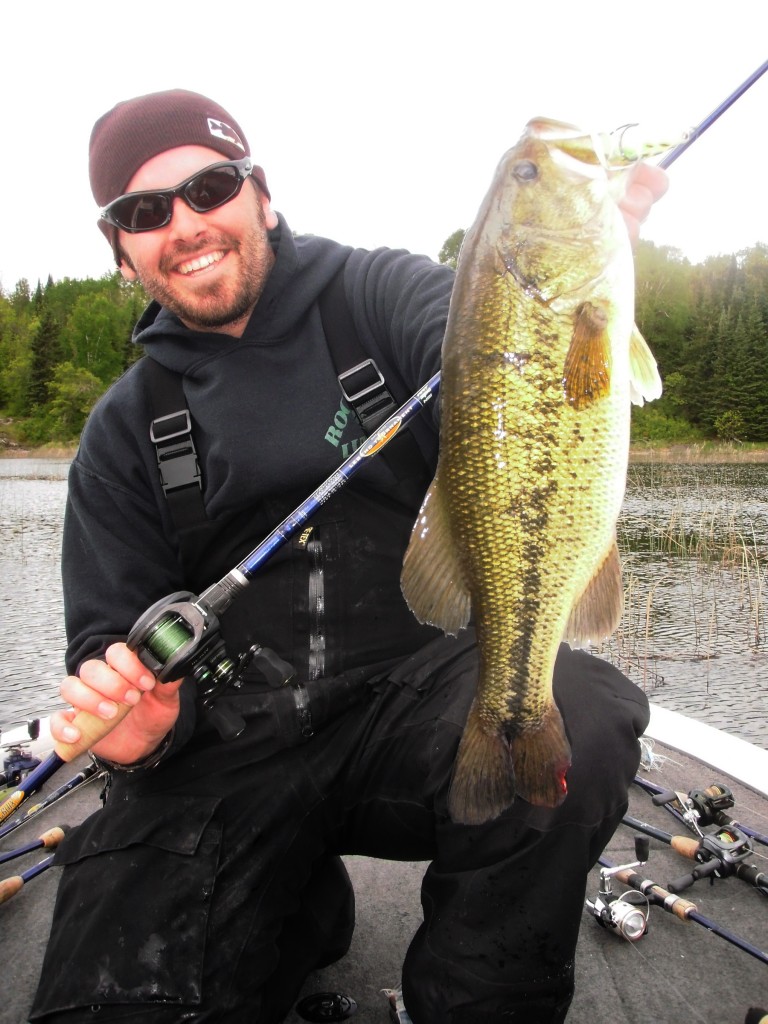 On to tackling these prespawn northern strains! In the immediate first weeks after ice out, the feeding windows of largemouth can be small as they shake off their winter rust. Those first few warm, calm spring days can lead to their first active foray into the shallows. A slow falling vertical presentation is usually key when the water is in the 48-52 F range. The best option to fit this niche is my personal favourite the flippin’ jig! A ½ oz Venom Lures True Image Vertical Jig is a good start. If the fish get ultra shallow, (and they will, 2 ft or less), I’ll switch up to a lighter 3/8 oz version. It’s hard to beat black and blue or a green pumpkin/brown type of colour. You want your trailer to have minimal action at this time of year, stick to chunks and beaver style baits like the Venom Lures Sweet Dream or Strike King Denny Brauer 3x Chunk. Once the water gets into the mid 50’s and up I’ll switch over to a Venom Dream Craw, these baits are extremely soft, garlic and salt infused, and the claws kick like a 2 year old getting yanked out of the play zone by his mother! Another great alternative vertical presentation option is a Texas rigged soft plastic creature bait or craw. My favourite is the Venom Better Beaver paired with a 4/0 Lazer Trokar TK130 Flippin’ hook and a ¼ oz tungsten bullet weight, pegged with an Eagle Claw bobber stop.
On to tackling these prespawn northern strains! In the immediate first weeks after ice out, the feeding windows of largemouth can be small as they shake off their winter rust. Those first few warm, calm spring days can lead to their first active foray into the shallows. A slow falling vertical presentation is usually key when the water is in the 48-52 F range. The best option to fit this niche is my personal favourite the flippin’ jig! A ½ oz Venom Lures True Image Vertical Jig is a good start. If the fish get ultra shallow, (and they will, 2 ft or less), I’ll switch up to a lighter 3/8 oz version. It’s hard to beat black and blue or a green pumpkin/brown type of colour. You want your trailer to have minimal action at this time of year, stick to chunks and beaver style baits like the Venom Lures Sweet Dream or Strike King Denny Brauer 3x Chunk. Once the water gets into the mid 50’s and up I’ll switch over to a Venom Dream Craw, these baits are extremely soft, garlic and salt infused, and the claws kick like a 2 year old getting yanked out of the play zone by his mother! Another great alternative vertical presentation option is a Texas rigged soft plastic creature bait or craw. My favourite is the Venom Better Beaver paired with a 4/0 Lazer Trokar TK130 Flippin’ hook and a ¼ oz tungsten bullet weight, pegged with an Eagle Claw bobber stop.
These two techniques require at least 30 # Vicious Fishing Braided line and are not for the faint of heart, don’t be shy on the hookset, make sure you cross their eyes! On tough cold front or off-bite days the streamlined profile of a Texas rig can oftentimes garner more bites than the bulk of a flippin’ jig. Trust me; I’ve learnt that the hard way. Pitch your jig or Texas rig right tight to the cover, and make sure your entry is as silent as possible. Since you’re pitching into just inches of water, technique can be critical, and quite possibly the difference between having a highlight reel day worthy of any WFN time slot or a day you can’t soon wait to forget. Make sure your safety is off, and you have a hair trigger ready to set the hook at a moments notice. Oftentimes a slight jump in your line may be the only inkling of a bite.
My setups for these tactics include: a St.Croix Legend Tournament Flippin’ Rod (TBC711HF) for the jig, and a St.Croix Legend Tournament Pitchin’ Rod (TBC76MHF) for the Texas rig. I prefer a longer rod when fishing the jig. I want the added length, control, and hook setting power of the longer rod to help drive home my jig hook past the barrier of that heavy weed guard, and I believe that the extra length in the rod allows me to feather that heavier jig upon initial entry into the water.
If you’re in search of new areas or expanding on your pattern throughout a given lake; your best bet is to go horizontal and cover water. My two favourite search tactics for early season largemouth are the swimbait and hollow-bodied frog. When largemouth are active and capitalizing on the spring baitfish runs in attempts to fatten up for the spawn; a swimbait can be downright lethal. I prefer the Reaction Innovations Skinny Dipper or the Strike King Shadalicious swimbait rigged on a 5/0 Lazer Trokar TK170 (weighted) or TK140 (unweighted) swimbait hook. A slow, simple, and steady retrieve covering skinny water and heavy cover is best left for braided line. You’re headed into the jungle and you’re after gorillas, I prefer Vicious Fishing 65# braided line.
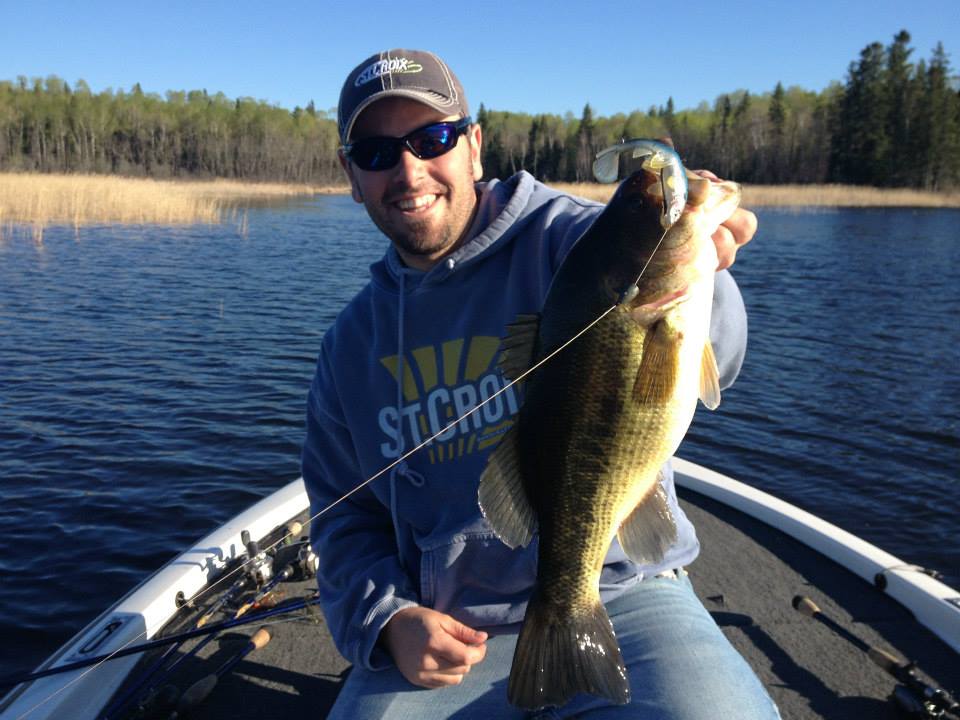
A frog may seem like an unconventional early season application but I’ve actually destroyed heavy limits of largemouth in inches of water as early as late April! The key to early season surface success is baitfish activity. If you see baitfish flitting around the surface and fish busting shiners, you’ve got the green light! This technique can be frustrating as oftentimes northern pike are the likely culprits of this type of early season activity but every once and a while it can be pure largemouth magic. I’m talking topwater destruction, cannonball dropping, toilet bowl flushing, Kermit the frog chaos!
My setups for these tactics include: a St.Croix Legend Tournament Frog Rod (TBC74HF) for frogging, and a St.Croix Legend Tournament Swimbait Rod (TBC710HF) for skinny dippin’. St.Croix recently revamped their frogging rod blank by adding an extra 4 inches in length. The added power and casting distance is noticeable when winching big bass out of Amazon-like conditions.
So the next time you’re out for one of your first early season spring bass trips, take a look at the calendar, drive some back bays and creek mouths, look for baitfish activity, and check the water temperature. If you observe some of these key ingredients, you might just want to pack a flippin’ jig, Texas rigged creature bait, swimbait, frog, and or a machete.
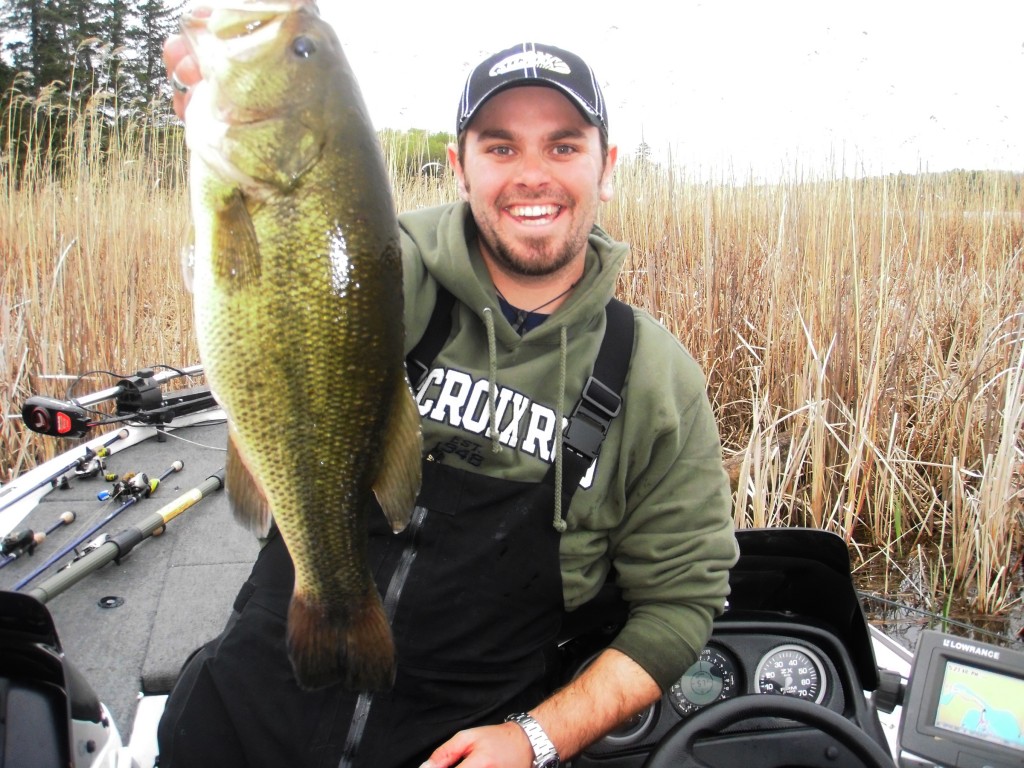
Josh Peacock, 29, fisheries biologist, is a successful tournament angler with several top-ten finishes from Northwest Ontario. The Kenora area of Lake of the Woods is his home and he is focusing on a variety of north country tournaments in 2014.




